If you’re looking for a powerful page builder to create stunning designs, Elementor Pro is an excellent choice. It’s one of the most popular page builders among WordPress plugins and has been the best builder since its launch in 2016.
With its intuitive user interface and extensive feature set, Elementor Pro is an excellent solution for anyone wanting to build custom pages on their WordPress site.
Elementor Pro is an easy-to-use drag-and-drop builder that can create any page with WordPress and works with all WordPress themes, allowing users to create whatever they want.
With its intuitive user interface and powerful features, you can easily design pages without coding knowledge or experience. The Elementor Builder also includes several pre-built templates for those who want to start quickly.
There is also a wide range of add-ons and plugins available for Elementor that can help further extend the builder’s capabilities.
Elementor Review: Who Is Elementor For?
Elementor Review 2024 is an excellent review for those looking to purchase Elementor Pro. This review provides a comprehensive and hands-on look into the user interface, features, and widgets that are included with Elementor. It also provides a thorough review of Elementor Pro and its features.
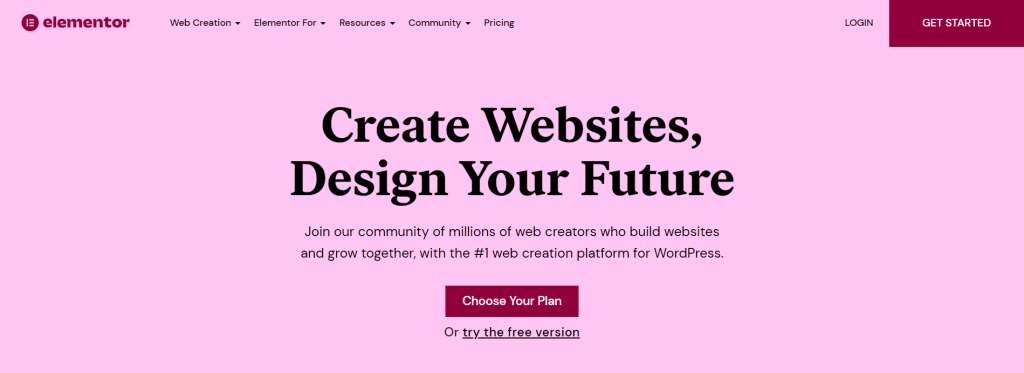
With the help of this elementor review 2024, you can learn how to create a page with Elementor and get the most out of its powerful tools. You will also understand the elements that makeup Elementor, such as its drag-and-drop editor, custom styling options, and various widgets.
Moreover, it will provide helpful tips on optimizing your website’s performance using Elementor’s features. This review is perfect for anyone who wants to learn more about Elementor or better understand the platform and its capabilities.
It covers all the key aspects of the platform, from its features to its pricing plans and customer support. Whether you’re an experienced user or a beginner, this review will help you decide whether Elementor is right.
How Does The Elementor Theme Builder Plugin Work?
Elementor is a WordPress page builder plugin with a visual, drag-and-drop interface. Elementor allows you to build bespoke designs without knowing any coding — it’s entirely visible and point-and-click. When you first open the Elementor interface, you’ll notice a live display of your design on the right and a sidebar on the left.
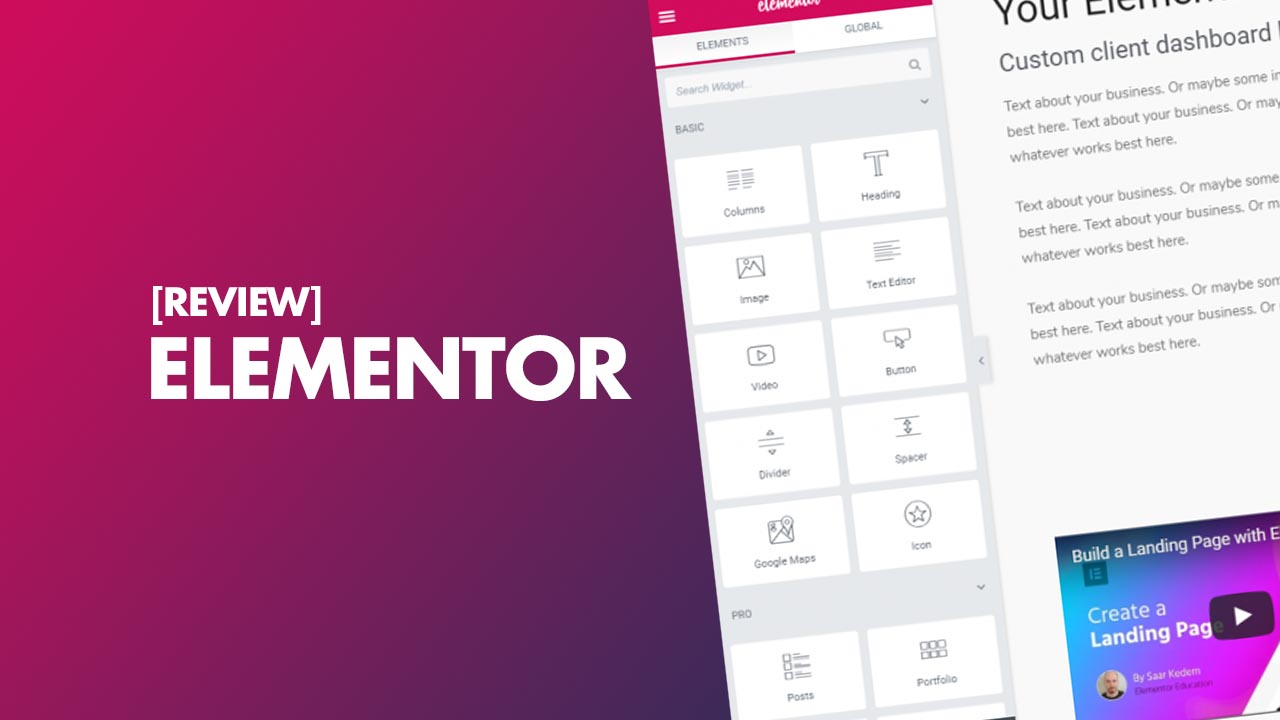
You may use the following tools to build your design:
- To manage the arrangement of your design, use “sections” and “columns.”
- To add new material, drag widgets from the left sidebar into your live preview.
- Drag and drop widgets in the live preview to rearrange them.
- To edit the text in your design, click and type.
- Control the appearance and content of particular sections, columns, or widgets using the sidebar.
- Use the right-click menu to delete, duplicate, or otherwise alter items.
In terms of content, the free edition of Elementor has a plethora of content widgets for things like:
- Buttons, Images, Videos, and Icons
- Google Maps integration
If you don’t want to start from scratch, Elementor includes hundreds of professionally-designed templates you may import.
This feature alone allows you to create visually appealing pages in WordPress.
Elementor Pro: What You Get?
Elementor Pro is a paid add-on plugin for WordPress.org’s free core Elementor plugin. At the most basic level, you receive the same UI…simply by adding additional features, widgets, and design options.
The ability to adapt the Elementor interface to diverse material forms is one of the most powerful aspects. For example, the free edition allows you to create material that will appear “within” the usual WordPress editor.
Elementor Pro adds to this in two ways:
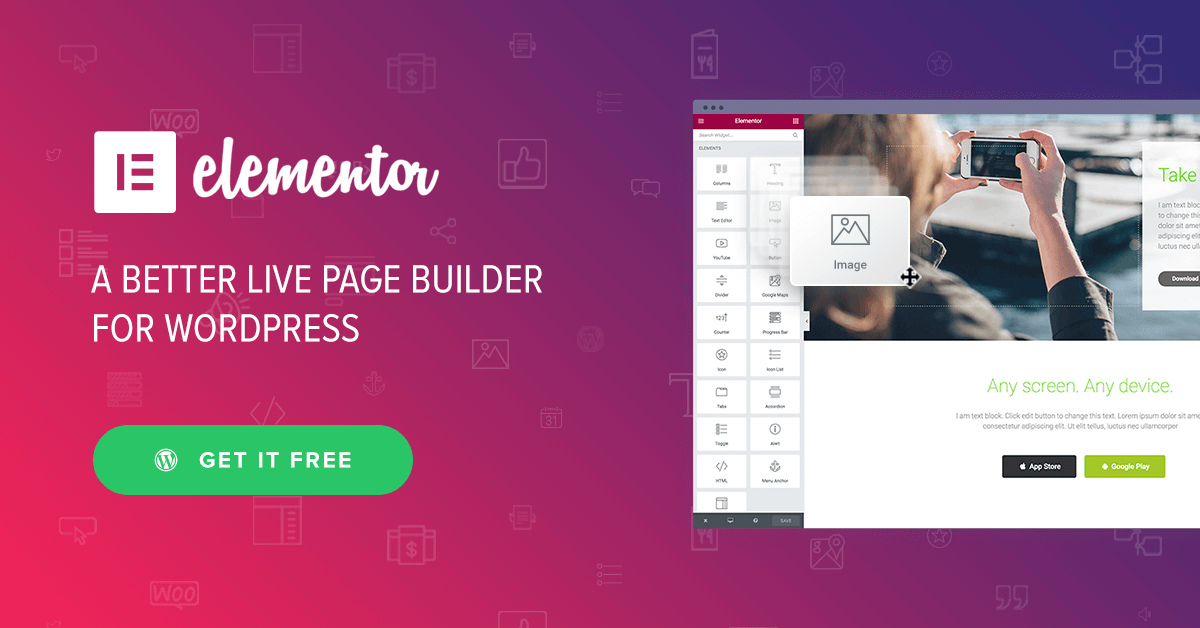
1. Pop-up Builder:
This feature helps you design custom pop-ups using the easy-breezy Elementor interface. Also, you can display the pop-ups anywhere on the website.
2. Theme Builder:
Using the theme builders, you can create a footer, header, single posts, and archives. Furthermore, you can apply the theme builder to the WooCommerce store using the WooCommerce builder.
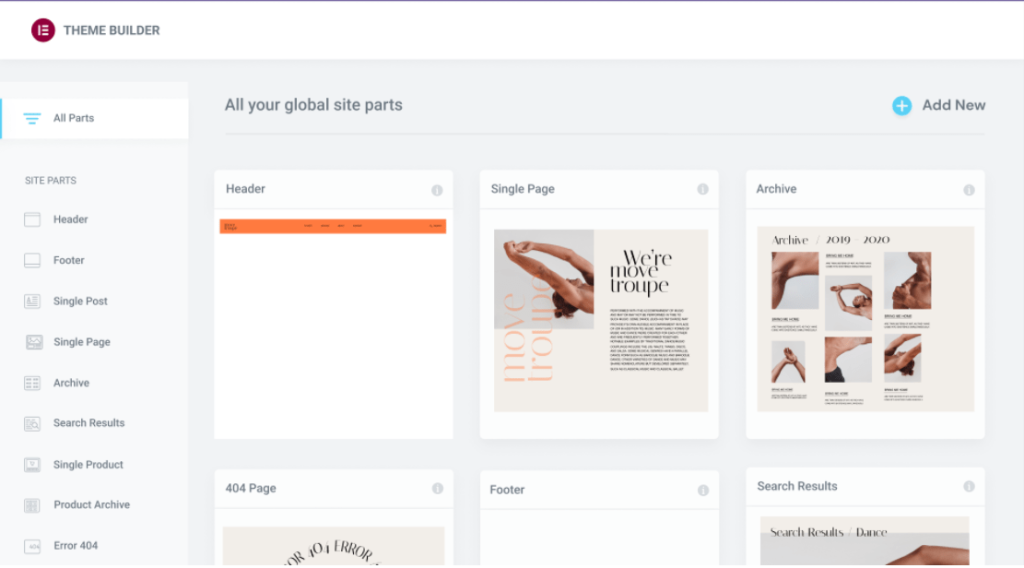
You’ll also be able to include dynamic information in your designs. For example, dynamic material can originate from your WordPress site, such as a registered user’s name, or via custom fields, such as advanced pods and custom fields.
For example, you might utilize dynamic content and Pop-up builder to build a bespoke welcome pop-up that addresses registered users by name.
Elementor Pro: Key Features
Elemetor, the WordPress web page builder plugin, has a lot to offer, and there are plenty of features you’ll find helpful. I’ve explained a few features to help you better understand the tool.
1. Front-end Page Builder:
Elementor is a front-end page builder far superior to a back-end builder. If you’re not familiar with the concept, a back-end page builder looks like this:
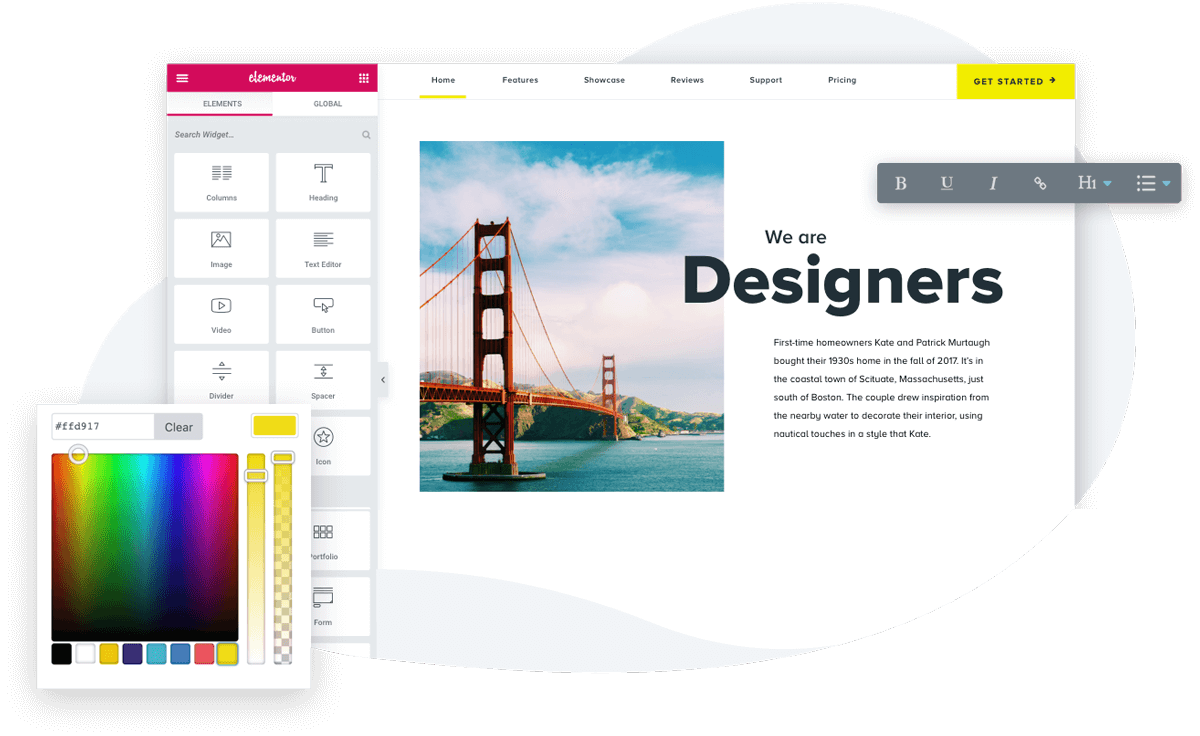
You won’t be able to view the changes you just made in real-time using a back-end page builder.
So, for each little modification, such as altering the color of a heading, you must click “Update,” wait a few seconds and then check your website.
This excessively long process makes designing WordPress websites exceedingly laborious, so I prefer front-end page builders like Elementor.
2. Mobile-friendly:
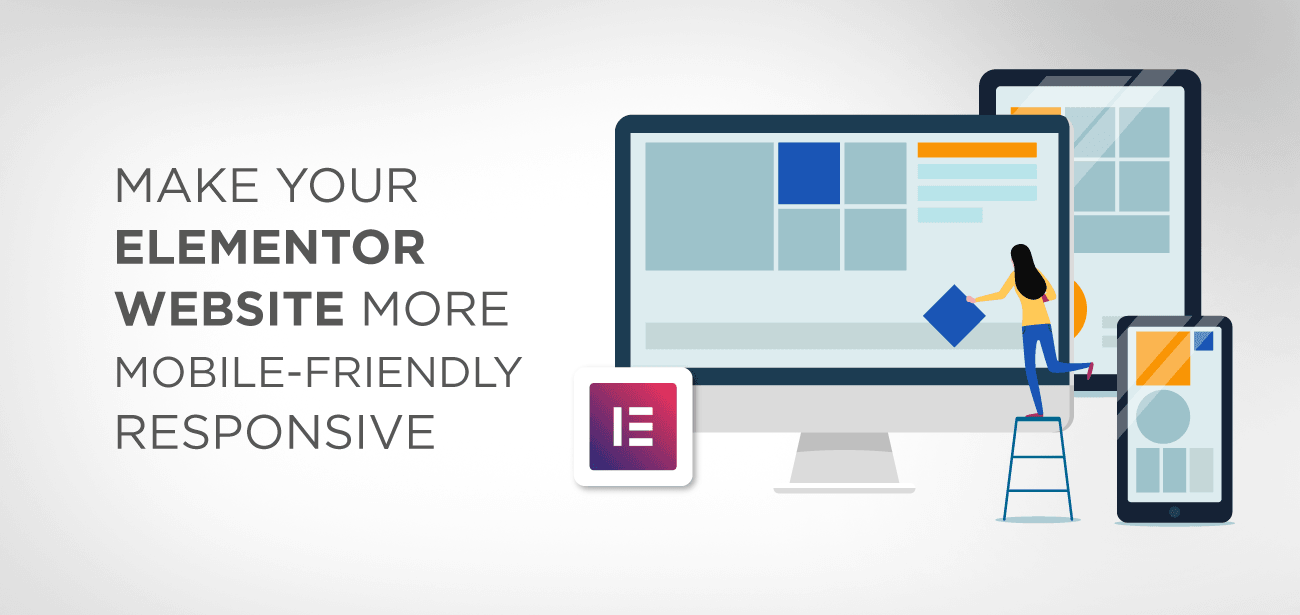
As more website users use smartphones to access the websites, a mobile-friendly site is becoming increasingly vital. So when you begin designing your website with Elementor, it’s very easy to get carried away by adding margins or paddings to your parts.
That’s great, but check whether the layout still appears well on mobile. You may accomplish this fast by tapping on the Desktop icon next to the “Publish” button and then selecting “Mobile” and “Tablet.”
3. In-line Text Editing:
Text can also be edited directly in the preview box. This is an excellent detail that makes the experience easier and faster.
Text may be customized in various ways, including altering the font family, allowing text shadows, changing the color and size, enabling drop caps, and more.
4. Templates & Blocks:
Elementor Pro templates and blocks are the most eye-catching feature of this Plugin. With its pre-built content, you can access more than 200+ templates, 16 website kits, and 100+ content blocks. With these templates, you can easily import them to your page to save time on their site-building.

Elementor Pro blocks can add a specific popular section to your page. As templates, blocks are fully editable along the Elementor Pro interface.
5. Widgets:
Elementor Pro offers many widget selections that you can place on your pages and the other area of your site. These widgets cover buttons, image galleries, carousels, pricing tables, calls to action, and more.

These widgets can be customized to ensure they have the right to look for your website. Even you can add more widgets on Elementor Pro with its paid and free extensions.
What’s The Benefit Of Using Elementor?
Elementor is one of the best WordPress page builders, allowing you to create beautiful and professional pages easily. Its intuitive interface works seamlessly with all WordPress themes and gives you access to a wide range of widgets that you can use to customize your pages.
With Elementor, you can purchase the Elementor Pro package for even more features and options. With this powerful tool, you can quickly create sophisticated layouts and design elements without having any coding knowledge.
It also offers an easy drag-and-drop builder to help you quickly get your page up and running. Elementor Pro is one of the best solutions to build a great website quickly and easily.
Elementor Pro vs Elementor Free: Which one to choose in 2024?
Elementor Pro and Elementor Free are all great options for any website in 2024. Elementor makes it easy to create a beautiful website with its WordPress Plugin and intuitive WordPress dashboard. With Elementor, you can easily customize the page layout of your website by using the powerful Elementor editor.
Here is a table to compare the differences between Elementor Pro and Elementor Free:
|
Feature |
Elementor Free |
Elementor Pro |
|
Drag & Drop Editor |
Yes |
Yes |
|
Variety Of Widgets |
Yes |
Yes |
|
Template Library |
Yes |
Yes |
|
Page Builder |
Yes |
Yes |
|
Custom CSS |
Yes |
Yes |
|
Theme Builder |
No |
Yes |
|
Visual Builder |
No |
Yes |
|
WooCommerce Integration |
No |
Yes |
|
Multilingual Support |
No |
Yes |
|
Premium Support |
No |
Yes |
Elementor Pro: How Much Does It Cost
The PRO version of Elementor is available in three packages: Personal, Plus, and Expert. Each bundle has the same capabilities; the only variation is the number of websites you need to construct. Elementor Pro is a paid plugin with various licensing options beginning at $59 per year.

The good news is that you can access all Elementor Pro features, regardless of your chosen plan. The only substantial distinctions between the plans are the number of sites on which you can use Elementor Pro, and the lower-priced plans only include email support.
You may also contact support through a live chat with the other plans.
Here are your purchase options for Elementor Pro:
- Essential Plan – $59 per year for use on one website and email support
- Expert Plan – $199 per year for use on 25 websites and email assistance.
- Agency Plan – $399 per year for usage on 1,000 websites and access to email and live chat support.
As previously said, there is also a free version of Elementor accessible, which allows you to test out the page builder interface to see whether it’s something you’d be pleased to use.
Elementor WordPress Hosting Pricing:
Elementor WordPress Hosting Pricing is affordable and can fit into almost any budget. They offer various plans ranging from the basic plan to the professional plan with added features.
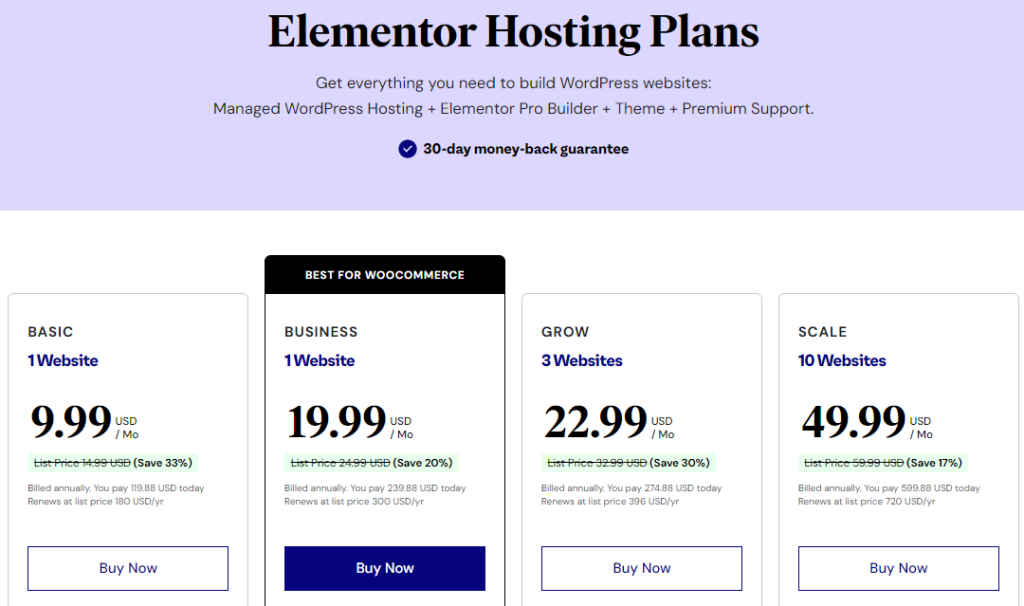
Here are the different plans they have to choose from:
- Basic Plan – This plan costs only $9.99 monthly and comes with all the basic hosting needs, such as one website, 30 GB bandwidth, and 10 GB storage.
- Business Plan – This plan costs $19.99 monthly and comes with one website, 50 GB bandwidth, and 20 GB storage.
- Grow Plan – This plan costs $22.99 monthly and comes with three websites, 75GB bandwidth, and 25 GB storage.
- Scale Plan – This plan costs $49.99 monthly and comes with ten websites, 100 GB bandwidth, and 40 GB storage.
All these plans come with a 30-day money-back guarantee to try it out risk-free. Plus, they offer additional features such as SSL certificates, DNS management, website backups, and more for an extra fee.
Elementor Pro Theme Builder | Is It Worthy?
As you can see, Elementor Pro is a powerful tool for developing unique content designs and customizing WordPress websites. Elementor Pro contains the functionality you need to build a new WordPress website from the start or add advanced website modification and page-building capabilities to an existing site.
Elementor Pro provides the finest blend of functionality and usability of any WordPress website and page builder I’ve tried. It’s also a terrific value alternative, with pricing beginning at $59 per year. This is especially true when considering layouts, widgets, and other tools like the pop-up builder.
Compared to some of its competitors, the most significant disadvantage of Elementor Pro is that most layouts are individual templates rather than whole website demos like Avada or style bundles like Divi.
There are several website kits in Elementor Pro, but only a few as the competitors. Divi also features a fantastic split-testing tool to help you improve your content, but Elementor needs to have built-in testing capabilities despite supporting third-party tools.
Elementor Pro Review: Pros & Cons
Here we have listed the pros & cons of Elementor Pro; let’s get inside it.
Pros:
- It included a live page editor
- There are numerous editing tools on offer
- Excellent customizability
- It comes with a built-in front-end page builder
- The interface is user-friendly
Cons:
- It cannot be not very clear for beginners
Related Read:
Conclusion: Elementor Pro Review 2024
The popularity of Elementor speaks for itself. But, again, it’s active on over 5 million sites, a figure few WordPress plugins achieve (and no other page builder plugin is close to).
More significantly, Elementor has a 4.8-star rating from thousands of users on WordPress.org. If you’re looking for a WordPress page builder plugin, Elementor is one of your best alternatives.
Try out the free version to see whether you like the UI. Then, consider upgrading to Elementor Pro if you fall into any of the abovementioned scenarios. Do you use the Elementor plugin? I’d like to know how you’re putting it to use. What recommendations do you have for other Elementor users?
Frequently Asked Questions:
Is Elementor a good builder?
Elementor is one of the most popular website creation systems, and it’s simple to understand. Elementor is a valuable tool for making your professional website, thanks to its handy front-end page builder, live editing, and a vast range of pre-designed themes.
Do I have to pay for Elementor every year?
The cost is a yearly charge, as stated on our pricing page. Your license will automatically renew each year. This ensures you’ll get premium customer service, Pro templates, and upgrades.
Does Elementor slow down your site?
Elementor will not slow your site down. The platform’s capabilities, which may allow any WordPress user to create distinctive, simple, original sites, have no negative impact on your site’s performance. Using Elementor, you won’t have to trade site performance for cutting-edge editing tools.
Does Elementor Pro have a free trial?
Yes, Elementor Pro offers a free trial for its users. The free trial gives you access to all the features and functionalities of Elementor Pro for a limited time, allowing you to try it out before deciding whether to upgrade to the paid version. The exact details of the free trial, including its duration and conditions, may vary and are subject to change at the discretion of Elementor.
What payment method does Elementor accept?
Elementor accepts payment via Stripe, Paypal, and all major types of credit cards like Discover, Mastercard, and Visa.

As a Social Media Specialist, Paulward brings a wealth of knowledge and experience to our team. They have a passion for Social Media Specialist and are dedicated to helping our clients succeed.
Leave a Reply